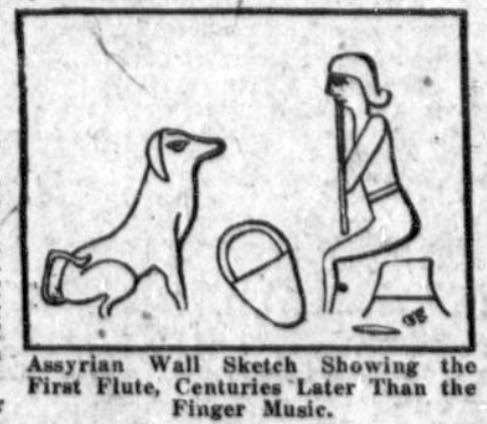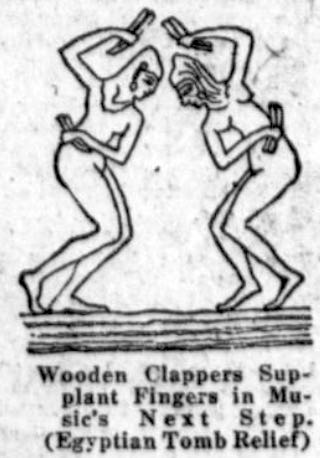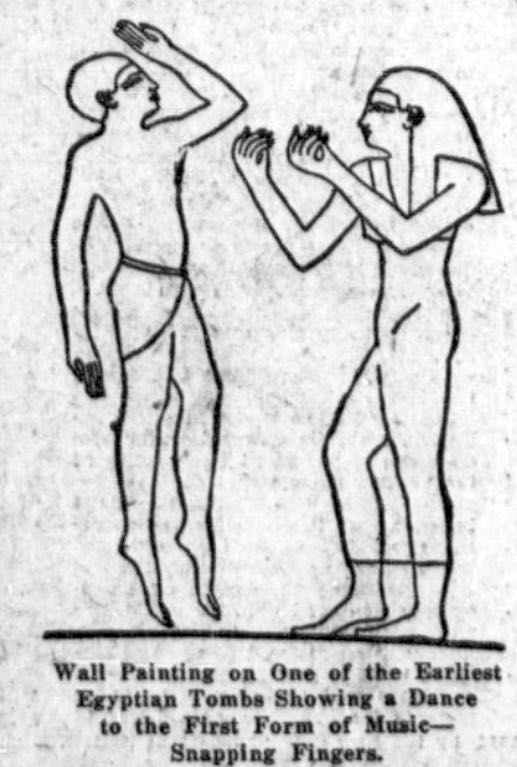
How did music evolve and what got it all started? This newspaper article from 1914 explains how music probably evolved from simple clapping and finger snapping. It is an interesting look into something few of us ever really contemplate.

Old Pictures Prove Music Grew Out of Simply Cracking Our Fingers
YOUR bumps of “time and tune” — according to the out-of-date science of phrenology — indicated the degree of your musical capacity. Everybody knows that the two fundamental elements of music are rhythm and a melodic succession of pleasant sounds varying in pitch. The initiated will inform you that the harmonious blending of sounds of different pitches — high, low and medium, constituting harmony, and the elaborate systems of polyphony developed with the perfecting of the modern orchestra round out the science and art of music as now practiced.
But “time and tune” continue to be the most important elements in music, and of these it has long been known that “time,” or rhythm, was the original progenitor of the whole system. Long before people sang or played upon musical instruments they danced in time with rhythmical sounds which were musical only by accident.
Interesting proof of this exists in relics of the ancient civilization of Egypt and Chaldea — carvings, instruments and wall sketches, drawings of some of which are reproduced here. Excavations at Thebes discovered bas reliefs of figures dancing to the rhythm of snapping human fingers.

Several other figures are clapping the hands together. Not even instruments of percussion, like the “bones” used by [African] minstrels are missing. It is significant, however, that most of these ancient instruments — always in pairs — were carved in imitation of human hands and arms, thus showing their derivation from the acts of hand clapping and finger snapping, showing that those methods of producing rhythmical sounds marked the beginning of the art which has produced the music of today.

These instruments of percussion are called “crotales.” Even bits of wood and metal clacked together produce different pitches. So one is not surprised to find the Syrians and Chaldeans substituting discs of metal, from which the “tinkling cymbals” evidently were derived. In the same countries the act of blowing into the end of a hollow reed evidently marked the origin of the flute. There is an ancient Chaldean wall sketch showing a dog charmed by the sweet sounds made by an ancient flute player.
There is similar evidence that pleasant tone qualities of tight-stretched strings were discovered at about this time — for there are bas reliefs of primitive forms of harps.
The periods represented by these relics prove, however, that rhythmical finger snapping and hand clapping were the actual beginning of some of the most inspired music of today.
SOURCE: Omaha daily bee. (Omaha [Neb.]), 08 Feb. 1914.

